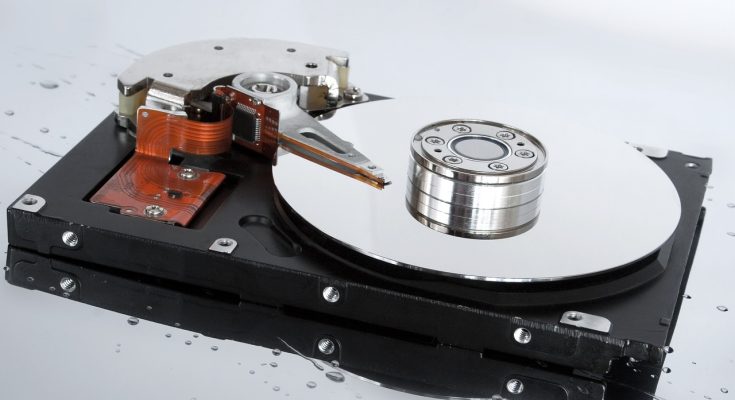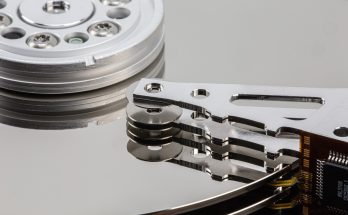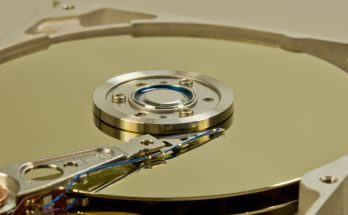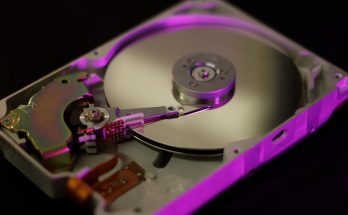Did you know human mistakes, like deleting files by accident, cause a lot of data loss? RAID 10 is special because it mixes mirroring and striping. This makes it fast and safe for your data.
This guide will help you with RAID 10 recovery. You can find quick solutions or professional help here.
When it comes to RAID 10 recovery, acting fast is key. The right steps can greatly help your chances of getting your data back. Tools like EaseUS Data Recovery Wizard can help a lot, with a 99.7% success rate.
Or, you can reach out to experts with years of experience. Let’s make sure your data is safe and can be recovered!
Understanding RAID 10: A Powerful Data Protection Strategy
RAID 10 is a strong way to keep data safe. It uses two RAID types: mirroring and striping. It needs at least four drives. Data is mirrored for safety and striped for speed.
What is RAID 10?
RAID 10 is also called RAID 1+0. It mixes RAID 1 and RAID 0. RAID 1 mirrors data, and RAID 0 speeds it up.
This makes RAID 10 fast and safe. It can handle many drive failures. But, it can’t handle failures on both sides of the mirror.
How RAID 10 Configurations Work
RAID 10 is all about being fast and safe. You need at least four drives. Two drives mirror data, and the other two stripe it.
This setup keeps data safe and fast. It’s good at avoiding data loss. If a drive fails, you can fix it fast without stopping work.
Knowing how RAID 10 works is key. It helps with fixing problems and keeping data safe.
Common Causes of Data Loss in RAID 10 Systems
Data loss in RAID 10 systems comes from many factors. Knowing these causes of data loss helps plan better recovery strategies. The main causes are disk failures, controller failures, and user errors.
Disk Failures and Their Impact
Disk failures are a big reason for data loss in RAID 10 arrays. A RAID 10 setup needs many disks working together. If three out of four disks fail, data loss is likely.
A rebuild failure can make things worse. It can lead to losing all data if the failed disks aren’t fixed. Checking SMART values regularly helps keep disks healthy.
The Role of Controller Failures
Controller failures are also key in RAID 10 data recovery issues. A malfunctioning controller can stop data from being read. This makes it hard to get back files.
Finding a failing controller early is important. It helps avoid more problems in your RAID system.
User Errors and Deletion Incidents
User errors often cause data loss, like accidental deletions and wrong settings. These mistakes can lead to losing important files. They need quick action.
Without recent backups, recovering RAID 10 data is harder. Training and strict data management rules can help avoid these problems.
RAID 10 Recovery: Essential Steps to Take
When data loss happens in RAID 10, you must act fast. RAID 10 recovery has key steps to help get your data back. Knowing these steps can help you recover quickly and safely.
Do Not Overwrite the Data
First, don’t use the RAID 10 array anymore. Using it can overwrite data, making recovery harder. Try to disconnect the drives to keep the data safe until you start the recovery.
Assessing the Situation Quickly
Check the RAID 10 array’s condition well. Look for error messages or disk lights. Knowing what’s wrong helps you fix it faster. Quick checks are very important for a good recovery.
Identifying Failed Drives
Finding out which drives failed is key. In RAID 10, losing up to two drives is okay. But, you must replace the right ones to avoid losing all data. This makes recovery more likely.
Using Software for RAID 10 Data Recovery
Recovering data from RAID 10 systems needs special software. The right tools can really help. Many software options are out there, each for different needs and easy to use.
Best Software Options Available
For strong RAID 10 recovery, check out these tools:
- Diskinternals RAID Recovery: Easy to use and works well on RAID 0, RAID 1, and RAID 10.
- EaseUS Data Recovery Wizard: Has a 99.7% recovery rate, great for RAID data recovery.
- Ontrack Easy Recovery Technician: Users often recommend it for its reliability.
- R-Studio: Known for its great RAID recovery performance.
How to Use Diskinternals RAID Recovery Tool
To get the most from Diskinternals RAID Recovery, do this:
- First, install and open the software on your computer.
- Choose the RAID type you want to recover.
- Then, use “Find RAID” to scan the drives.
- After finding it, follow the steps to get your files back.
- Check the files you got and save them somewhere else, not on the RAID.
If you need help, talk to professional RAID 10 recovery experts.
Manual Recovery Methods Explained
If you know tech, you can try manual recovery. This means rebuilding the RAID setup yourself:
- Use command-line tools like MDADM in Linux.
- Rebuild RAID from scratch if you know how.
- Use extra equipment, like QNAP, to fix your array.
But, problems like controller failures or mistakes can make it hard. If you only have one copy of important data, get help from the best RAID 10 recovery services. They use top-notch gear and follow rules like the 3-2-1 backup rule to keep your data safe.
Professional RAID 10 Recovery Services
When RAID 10 problems happen, it’s key to know when to get help. RAID 10 systems are made for safety and speed. But, they can fail for reasons like many drives not working or data getting messed up. At this time, it’s best to get help from experts to keep your data safe.
Experts have the skills and tools needed for recovery. They help you fix problems without losing more data.
When to Contact Recovery Experts
Here are times when you should get help from RAID 10 recovery services:
- Two drives failing in the same RAID set, causing all data loss.
- RAID controller keeps showing errors, hinting at a failure.
- Drives get damaged from things like power surges or natural disasters.
- Trying to fix it yourself but it’s not working.
Best RAID 10 Recovery Services Available
There are many services that can help with RAID 10 data recovery. Companies like File Savers and PITS Global Data Recovery Services are top in the field:
| Service Provider | Specialization | Success Rate | Operating Systems Supported |
|---|---|---|---|
| File Savers | RAID 10 recovery from all media storage brands | High | Windows, VMware, Linux, Mac, Novell, UNIX |
| PITS Global Data Recovery Services | Emergency data recovery services | 99% | Windows, Linux, Mac, various NAS |
Using professional RAID 10 recovery services boosts your data recovery chances. It also prevents more problems from DIY mistakes. Always choose companies that follow industry standards and offer solutions that fit your needs.
Tips for a Quick RAID 10 Recovery
Getting your RAID 10 back fast is key. It helps keep your work going and your data safe. A good backup plan is your best friend before disaster strikes.
Streamlining the Recovery Process
To get your RAID 10 back fast, do these things:
- Check the problem right away. See if it’s just one drive or more.
- Use the right recovery software. Tools like Disk Drill can help get back your RAID 10 files.
- Keep all RAID setup details written down. This helps a lot when you’re fixing things.
Best Practices During Data Recovery
Follow these tips for a better RAID 10 recovery:
- Don’t write new stuff on the RAID array. It can make your data gone forever.
- Keep your drives safe. Take out any drives that aren’t broken if you need to fix things.
- Get help from pros for tough problems. Affordable RAID 10 recovery services like EaseUS can be a big help.
Maintaining a Reliable Backup Strategy
Being proactive can prevent big data loss. Here’s how to make a strong backup plan:
- Back up important data often to external drives or the cloud.
- Make sure your backups work. Test them to see if you can get your data back.
- Have a backup system that can switch to another one fast if RAID 10 fails.
Using these tips makes recovery faster and better. It also prepares you for future RAID 10 problems.
Secure and Affordable RAID 10 Recovery Options
When you need RAID 10 recovery, you must find a balance. You want it to be affordable yet done by experts. Here’s how to do it right.
Evaluating Cost vs. Expertise
Choosing the right service means looking at cost and expertise. Think about these points:
- Reputation: Find services known for good results.
- Success Rates: High success rates mean they’re reliable.
- Experience: Look for experts with lots of RAID experience.
- Security Measures: Make sure they keep your data safe.
Exploring Budget-Friendly Recovery Services
There are many affordable RAID 10 recovery services. Here’s a table comparing some:
| Provider | Starting Price | Reviews | Success Rate | Communication |
|---|---|---|---|---|
| Gillware | Contact for Quote | 4.8/5 | 95% | Daily Updates |
| DiskInternals | $299 | 4.5/5 | 90% | Upon Request |
| DriveSavers | $300 | 4.7/5 | 93% | Weekly Updates |
Choosing the right service means looking beyond price. You want quality and security. By picking reputable experts, you’ll know your data is safe.
Conclusion
Understanding RAID 10 is key for those who use it to keep their data safe. It mixes RAID 1’s mirroring with RAID 0’s striping. This makes RAID 10 strong against data loss.
But, RAID 10 has its limits. If more than one drive in a mirrored pair fails, data loss risk goes up. Knowing this is important for RAID 10 recovery.
In this article, we talked about RAID 10 systems. We covered why data loss happens and how to get it back. It’s important to watch your drives and have backups.
Choosing the right software and knowing when to get help is also key. These steps help keep your data safe in RAID 10.
By following these steps, you can keep your RAID 10 data safe. Managing your RAID well and using the right recovery methods helps. Always look after your RAID setup for peace of mind with your data.
FAQ
What is RAID 10 and how does it work?
RAID 10 is a mix of RAID 1 and RAID 0. It needs at least four drives. Data is mirrored for safety and striped for speed.
How can I recover data from a failed RAID 10 array?
Don’t use the array again to avoid losing more data. Check the array’s condition and find out which drives failed. Use special software or get help from RAID 10 recovery services.
What are some effective software options for RAID 10 recovery?
Good software for RAID 10 recovery includes Diskinternals and ReclaiMe Free RAID Recovery. Diskinternals has tools for RAID data recovery.
When should I consider hiring a professional RAID recovery service?
Hire a professional RAID recovery service if many drives fail or data gets corrupted badly. Experts can stop more data loss and help recover your data.
What are best practices for RAID 10 data recovery?
For RAID 10 data recovery, keep a reliable backup. Act fast to stop using the array. Know the recovery process well. Good preparation helps recover data quickly and well.
How do I choose an affordable RAID 10 recovery service?
Choose an affordable RAID 10 recovery service by comparing costs and skills. Find providers known for being reliable and secure. This way, you get good service without spending too much.



